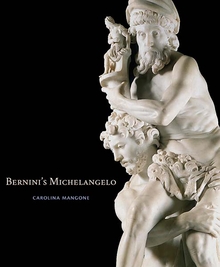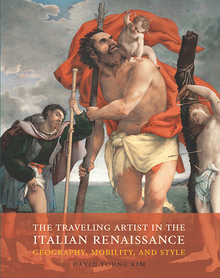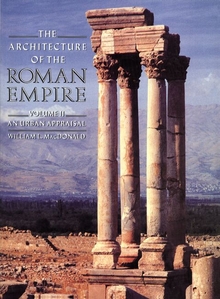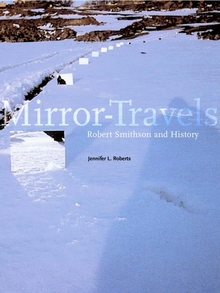The Imperial Abbey of Farfa
WARNING
You are viewing an older version of the Yalebooks website. Please visit out new website with more updated information and a better user experience: https://www.yalebooks.com
Architectural Currents of the Early Middle Ages
Charles McClendon
The Benedictine abbey of Farfa was one of the most important monastic centers of medieval Europe. As an imperial establishment, patronize and protected by Charlemagne and his successors yet situated only thirty miles northeast of Rome, Farfa was often found at the center of events involving the papacy and the Empire.
While its historical importance has long been recognized, the physical remains of the abbey have received little attention until now. This book by Charles B. McClendon is unique in combining an assessment of Farfa’s place in the overall development of medieval architecture with an analysis of the abbey’s historical role. McClendon has based his study on a detailed architectural survey of the medieval abbey church and on the extensive excavations of the site carried out under his co-direction between 1978 and 1983. By examining archaeological, architectural, and historical sources, McClendon reconstructs the various phases in the growth of the monastic layout from late antiquity to the early Renaissance, analyzes the circumstances under which they were built, and relates his findings to the architectural currents of the day. He shows, for example, that the ninth-century additions to the abbey church by Abbot Sichardus reflect the Carolingian revival of the plan of Old St. Peter’s in Rome; that the design of other features points to influence from north of the Alps; that the east end of the abbey church, extensively rebuilt in the mid-eleventh century, should be considered a major monument of the early Romanesque period. Demonstrating that each phase of the architectural history of Farfa reflects the latest developments not only in Italy but also in the north, McClendon makes clear that Farfa provides a valuable understanding of the dynamic forces that helped shape the architecture of the early Middle Ages.
“Scholarship at its best. . . . This volume will be the standard reference for many years to come.”—Richard Krautheimer, New York University
While its historical importance has long been recognized, the physical remains of the abbey have received little attention until now. This book by Charles B. McClendon is unique in combining an assessment of Farfa’s place in the overall development of medieval architecture with an analysis of the abbey’s historical role. McClendon has based his study on a detailed architectural survey of the medieval abbey church and on the extensive excavations of the site carried out under his co-direction between 1978 and 1983. By examining archaeological, architectural, and historical sources, McClendon reconstructs the various phases in the growth of the monastic layout from late antiquity to the early Renaissance, analyzes the circumstances under which they were built, and relates his findings to the architectural currents of the day. He shows, for example, that the ninth-century additions to the abbey church by Abbot Sichardus reflect the Carolingian revival of the plan of Old St. Peter’s in Rome; that the design of other features points to influence from north of the Alps; that the east end of the abbey church, extensively rebuilt in the mid-eleventh century, should be considered a major monument of the early Romanesque period. Demonstrating that each phase of the architectural history of Farfa reflects the latest developments not only in Italy but also in the north, McClendon makes clear that Farfa provides a valuable understanding of the dynamic forces that helped shape the architecture of the early Middle Ages.
“Scholarship at its best. . . . This volume will be the standard reference for many years to come.”—Richard Krautheimer, New York University
"Scholarship at its best. . . . This volume will be the standard reference for many years to come."—Richard Krautheimer
"The study not only expands our knowledge of Farfa and its context but also strengthens the case for vigorous architectural currents shaping the architecture of the early Middle Ages."—Thomas Joacoby, Art Documentation
"Based upon several years of painstaking research, McClendon's study is a most welcome and valuable contribution to the literature on early-medieval architecture. . . . The implications of this important early-medieval building will have a profound impact on the direction of future scholarship on early-medieval architecture."—Suzanne Lewis, Speculum—A Journal of Medieval Studies
"A valuable book for church historians; it makes clear the ways in which art history and archeology can offer insights on a variety of social and religious issues."—Duane J. Osheim, Religious Studies Review
"This well-written and well presented book clarifies the previously very confused structural history of one of the greatest abbeys of early medieval Europe. . . . A work full of stimulating ideas."—Bryan Ward-Perkins, Burlington Magazine
"A refreshing connexion between [McClendon's] architectural analysis and his political comment."—H. R. Lyon, Apollo Magazine
"This excellent new study presents a thorough reevaluation of the earlier literature on Farfa."—Samual Gruber, Design Book Review
"The clearly drawn plans and reconstruction studies and the high-quality illustrations make it easy to follow McClendon's arguments. He supports his findings with a wealth of architectural comparisons and bibliographic material that demonstrate he is highly conversant with early medieval architecture."—W. Eugene Kleinbauer, American Historical Review
"A thorough and careful book. . . . McClendon provides the reader with all the tools needed to follow his argument and to critique his evidence. . . . A useful new piece of the puzzle that contributes to a better overall understanding of the period."—William R. Cook, Church History
"Excellent. . . . Undoubtedly an important contribution to the study of Early Medieval architecture."—Samuel Gruber, Design Book Review
"In this important book Charles McClendon, employing the results of new archeological excavations he co-directed, provides the first comprehensive study of the architectural history of the abbey. . . . This book shows the results of thorough research and careful thought and its major arguments are convincing."—Robert Melzak, Journal of the American Academy of Religion
ISBN: 9780300033335
Publication Date: September 10, 1987
Publication Date: September 10, 1987
318 pages, 7 x 10
156 b/w illus.
156 b/w illus.













